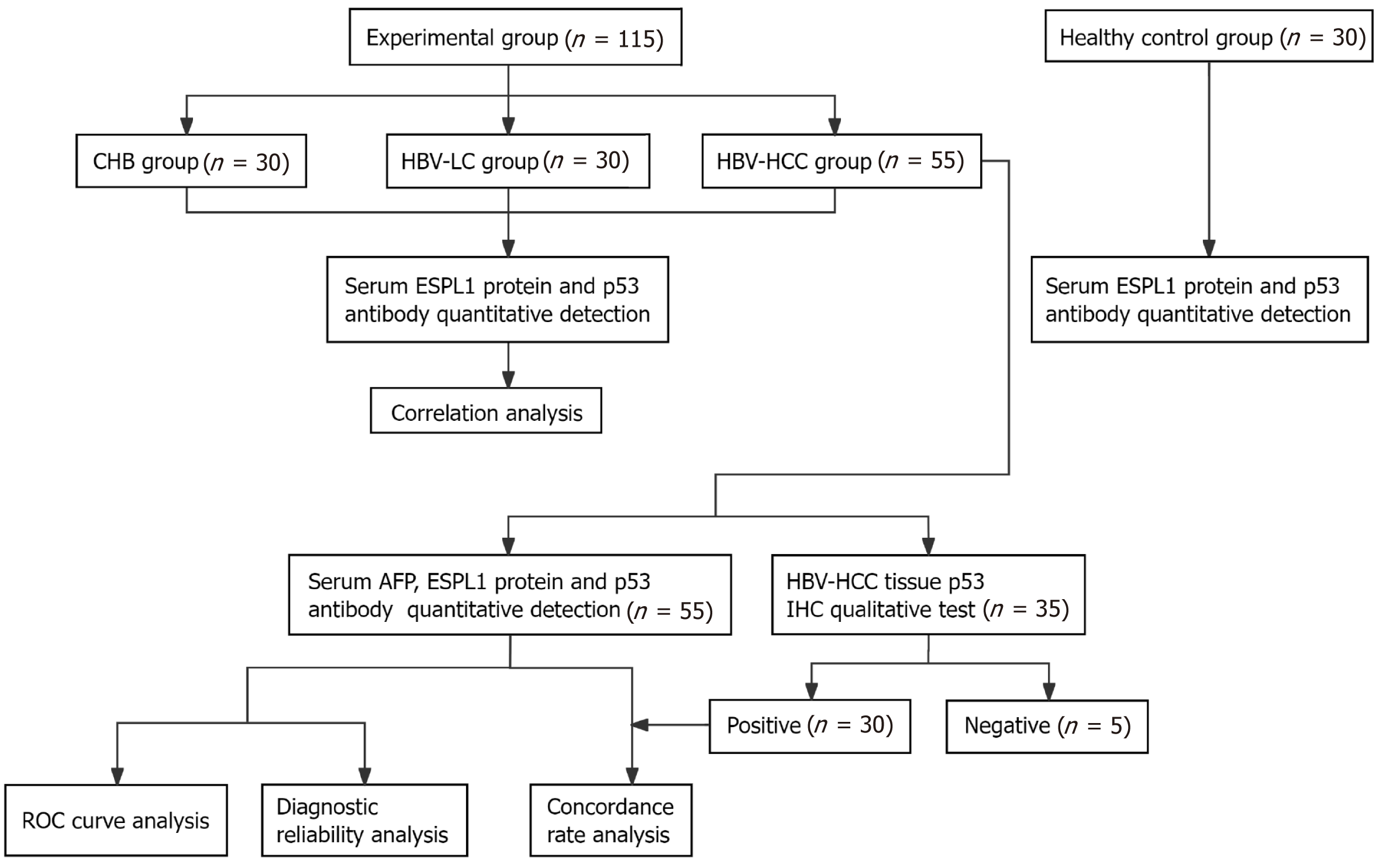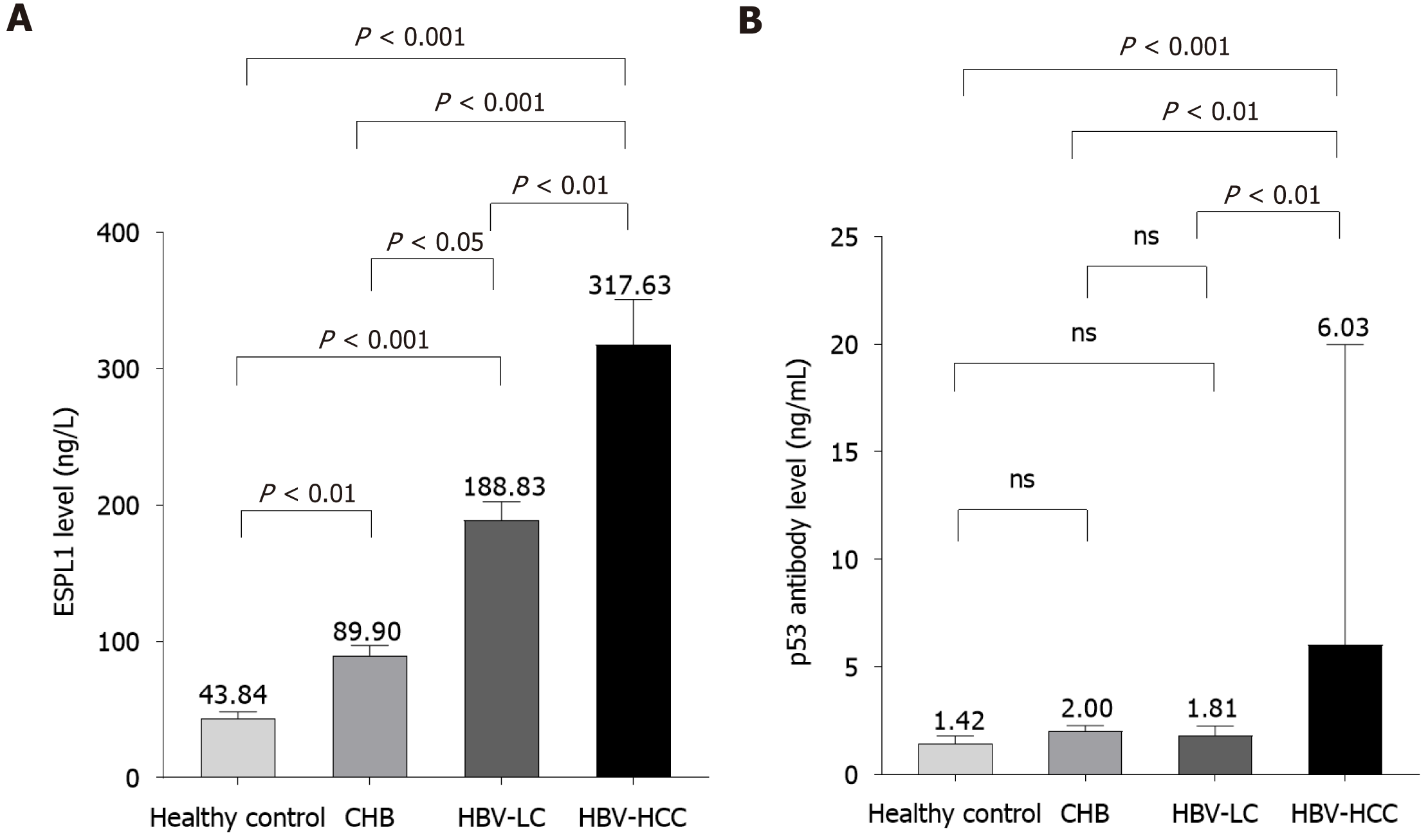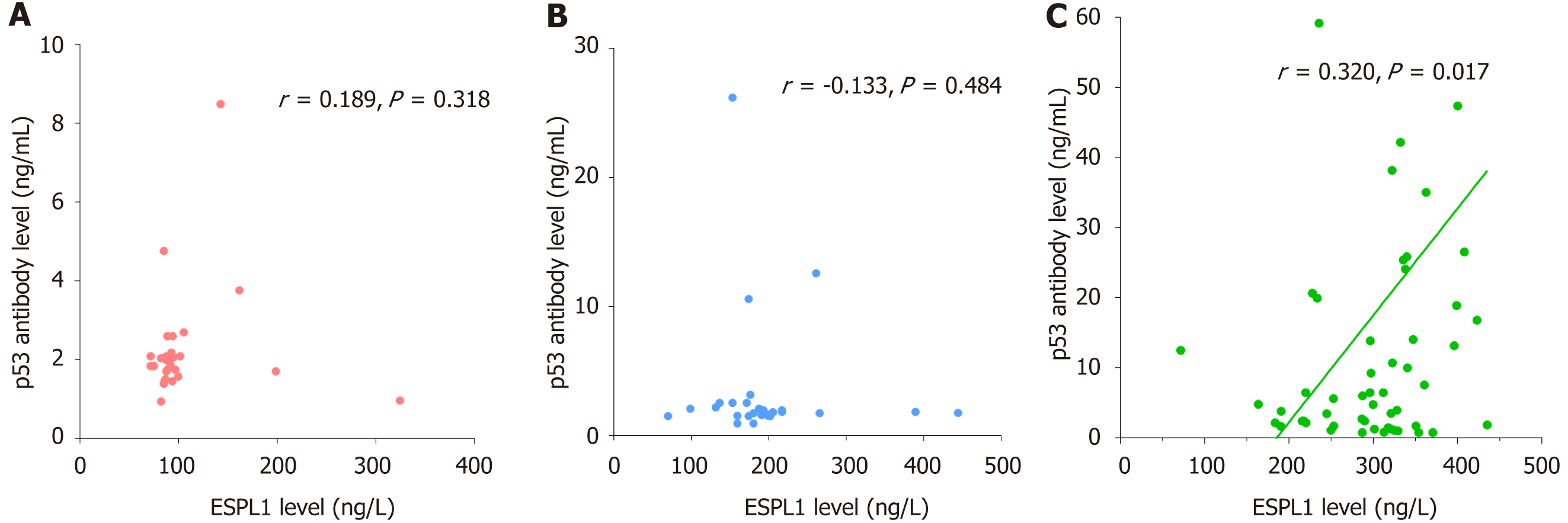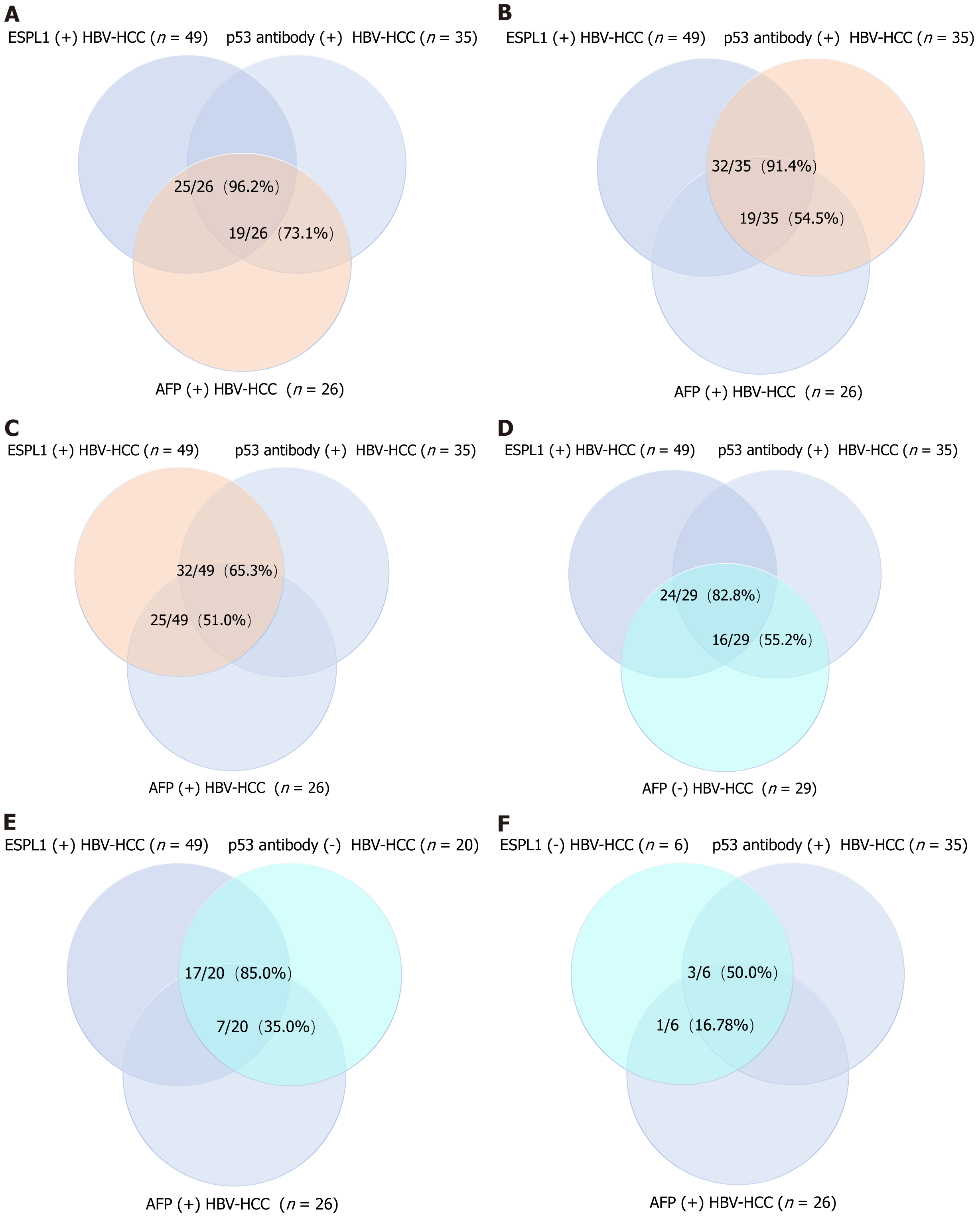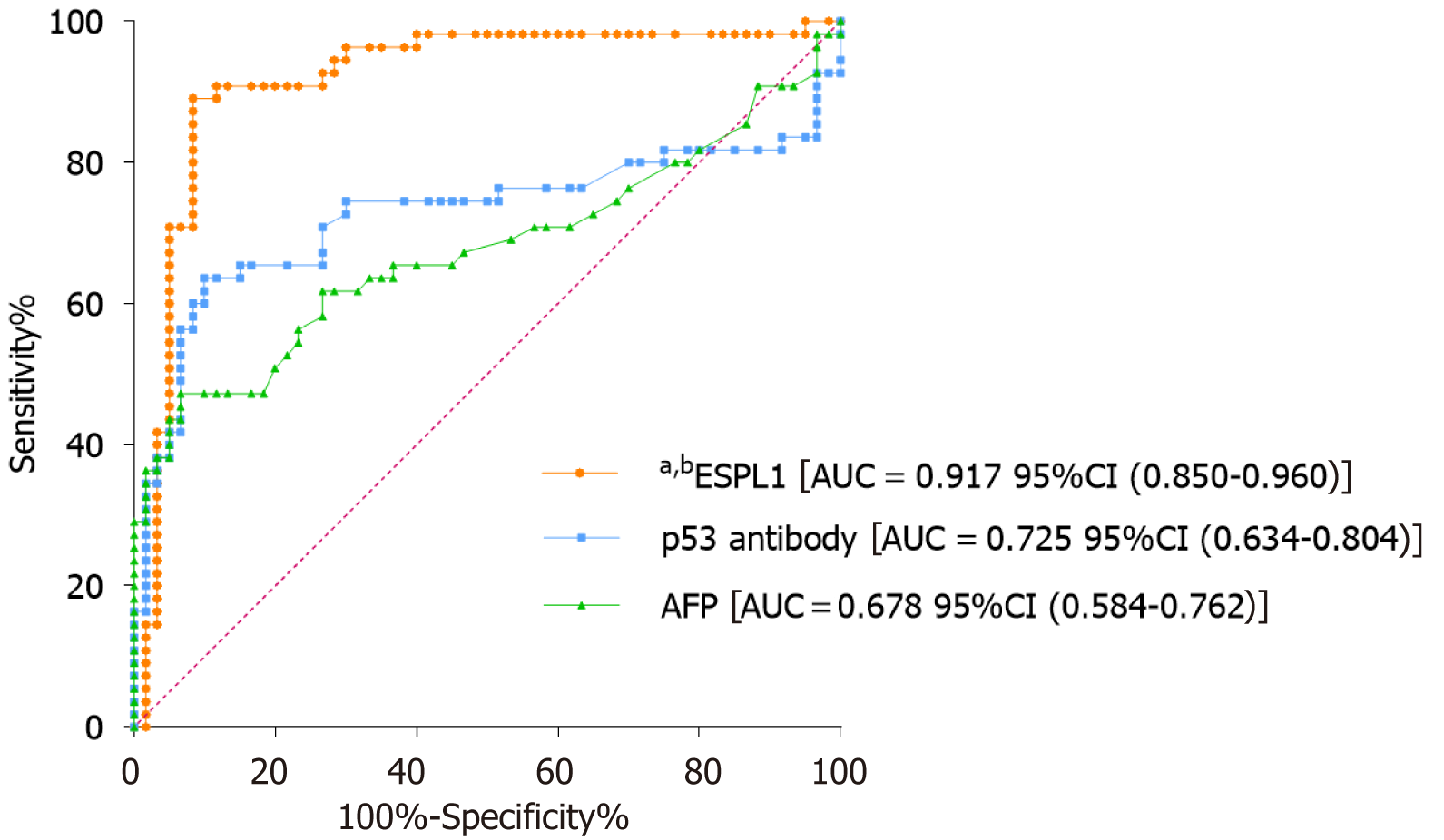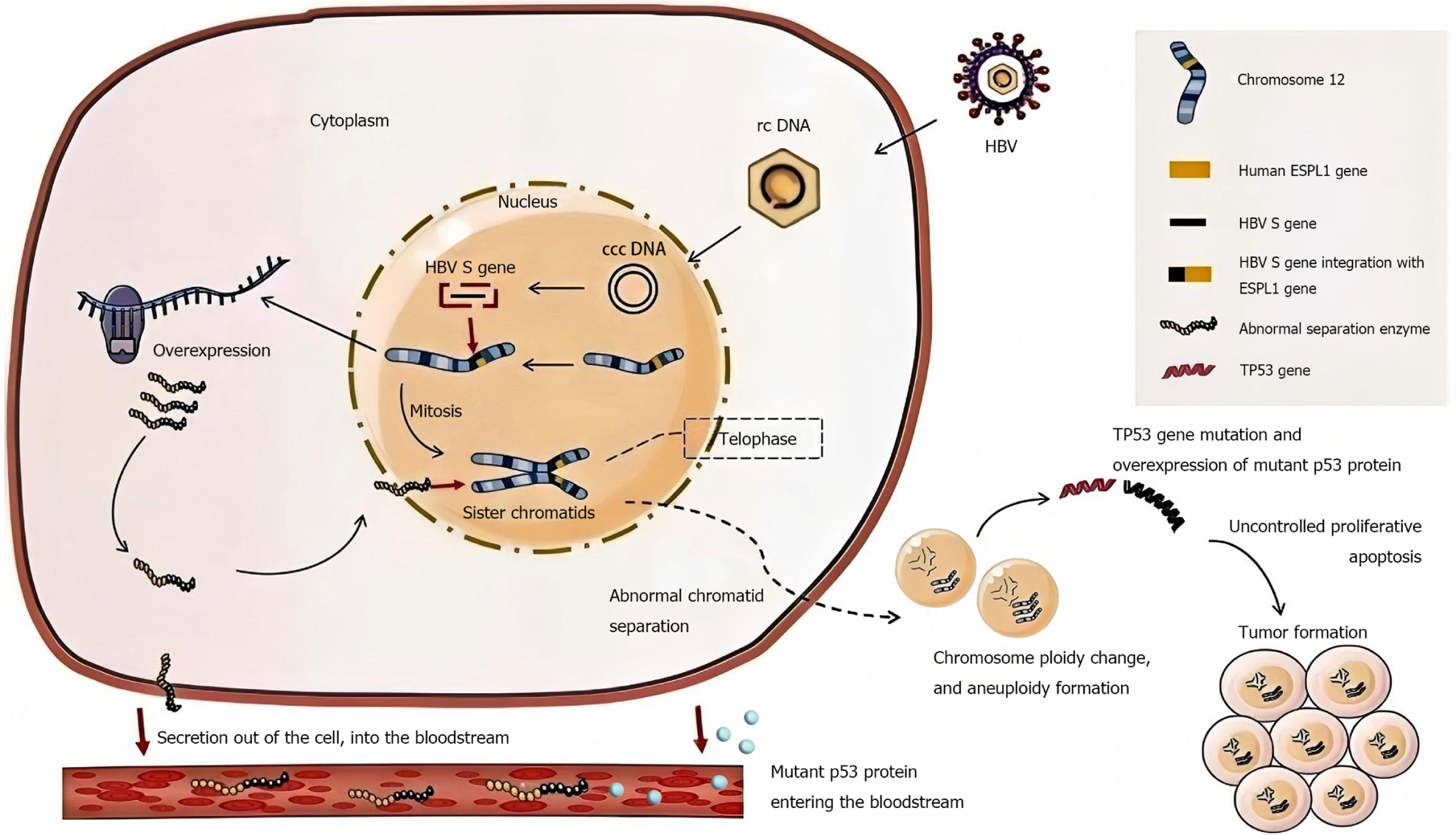Copyright
©The Author(s) 2025.
World J Hepatol. Jul 27, 2025; 17(7): 108850
Published online Jul 27, 2025. doi: 10.4254/wjh.v17.i7.108850
Published online Jul 27, 2025. doi: 10.4254/wjh.v17.i7.108850
Figure 1 Research flowchart outlining participant enrollment, group allocation, and biomarker analysis.
CHB: Chronic hepatitis B; HBV-LC: Hepatitis B virus-related liver cirrhosis; HBV-HCC: Hepatitis B virus-related hepatocellular carcinoma; ESPL1: Extra spindle pole bodies-like 1; AFP: Alpha-fetoprotein; IHC: Immunohistochemistry; ROC: Receiver operating characteristic.
Figure 2 Comparison of serum biomarker levels among study groups assessed by Kruskal-Wallis test.
A: The level of serum extra spindle pole bodies-like 1 (ESPL1) protein; B: The level of serum p53 antibody. ESPL1: Extra spindle pole bodies-like 1 CHB: Chronic hepatitis B; HBV-LC: Hepatitis B virus-related liver cirrhosis; HBV-HCC: Hepatitis B virus-related hepatocellular carcinoma; ns: Not significant.
Figure 3 Scatter plots illustrating the correlation between serum extra spindle pole bodies-like 1 protein and p53 antibody levels.
A: In chronic hepatitis B group; B: In hepatitis B virus (HBV)-related liver cirrhosis group; C: In HBV-related hepatocellular carcinoma group. ESPL1: Extra spindle pole bodies-like 1.
Figure 4 Expression patterns of serum extra spindle pole bodies-like 1 protein, p53 antibody, and alpha-fetoprotein with hepatitis B virus-related hepatocellular carcinoma.
In the 55 patients diagnosed with hepatitis B virus hepatitis B virus-hepatocellular carcinoma, 49 (89.1%) were extra spindle pole bodies-like 1-positive, 35 (63.6%) were p53 antibody-positive, and 26 (47.3%) were alpha-fetoprotein-positive. A: In the 26 alpha-fetoprotein (AFP)-positive patients, 25 (96.2%) were extra spindle pole bodies-like 1 (ESPL1)-positive and 19 (73.1%) were p53 antibody-positive; B: In the 35 p53 antibody-positive patients, 32 (91.4%) were ESPL1-positive and 19 (54.5%) AFP-positive; C: In the 49 ESPL1-positive patients, 32 (65.3%) were p53 antibody-positive and 25 (51.0%) were AFP-positive. D: In the 29 AFP-negative patients, 24 (82.8%) were ESPL1-positive and 16 (55.2%) were p53 antibody-positive; E: In the 20 p53 antibody-negative patients, 17 (85.0%) tested positive for ESPL1, whereas 7 (35.0%) were AFP-positive; F: In the 6 ESPL1-negative patients, 3 (50.0%) were p53 antibody-positive, and 1 (16.7%) was AFP-positive. ESPL1: Extra spindle pole bodies-like 1; AFP: Alpha-fetoprotein.
Figure 5 Receiver operating characteristic curves of serum extra spindle pole bodies-like 1, p53 antibody and alpha-fetoprotein for diagnosing hepatitis B virus-related hepatocellular carcinoma.
aP < 0.05 vs p53 antibody; bP < 0.05 vs alpha-fetoprotein. ESPL1: Extra spindle pole bodies-like 1; AFP: Alpha-fetoprotein; AUC: Area under the receiver operating characteristic curve.
Figure 6 Proposed mechanism of accumulative effects involving extra spindle pole bodies-like 1 gene integration and mutated p53 protein overexpression in the progression to hepatitis B virus-related hepatocellular carcinoma.
- Citation: Feng YF, Zhou HK, Hu BB, Wang H, Liang HK, Wei L, Li QM, Su TM, Yin QB, Su MH, Jiang JN. Evaluating serum extra spindle pole bodies-like 1 protein vs p53 antibody for hepatitis B virus-related hepatocellular carcinoma diagnosis. World J Hepatol 2025; 17(7): 108850
- URL: https://www.wjgnet.com/1948-5182/full/v17/i7/108850.htm
- DOI: https://dx.doi.org/10.4254/wjh.v17.i7.108850









